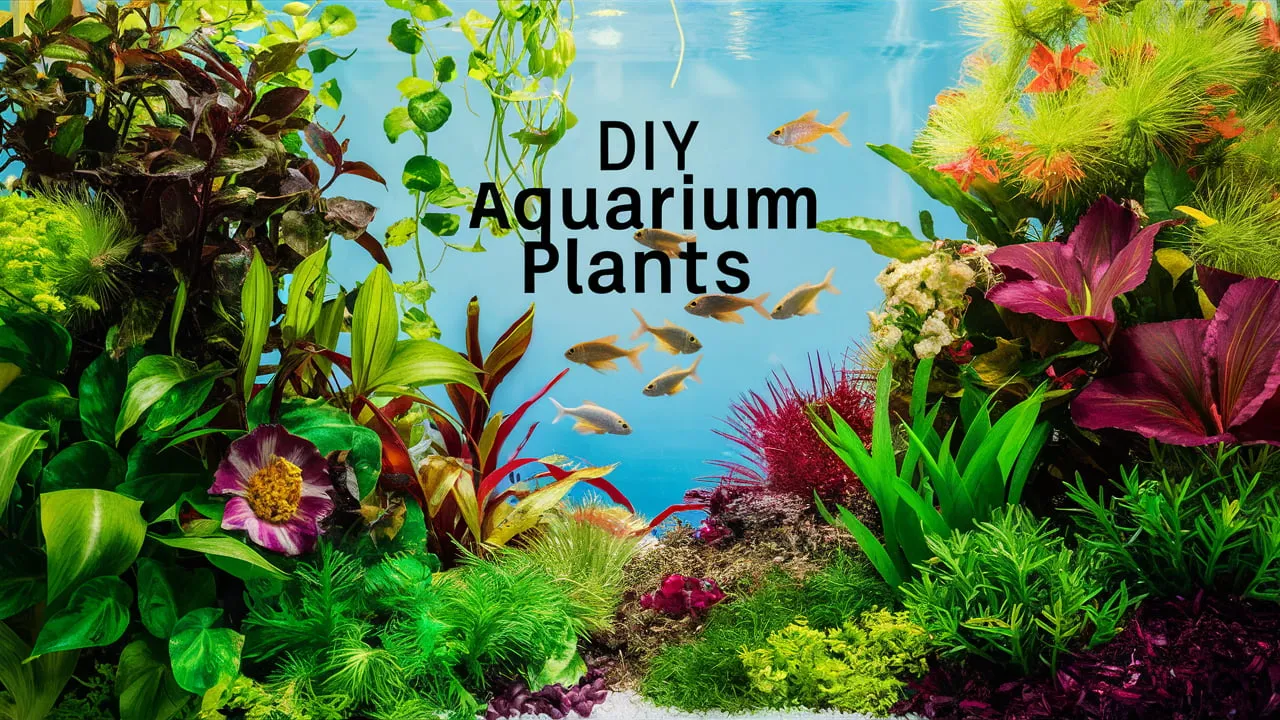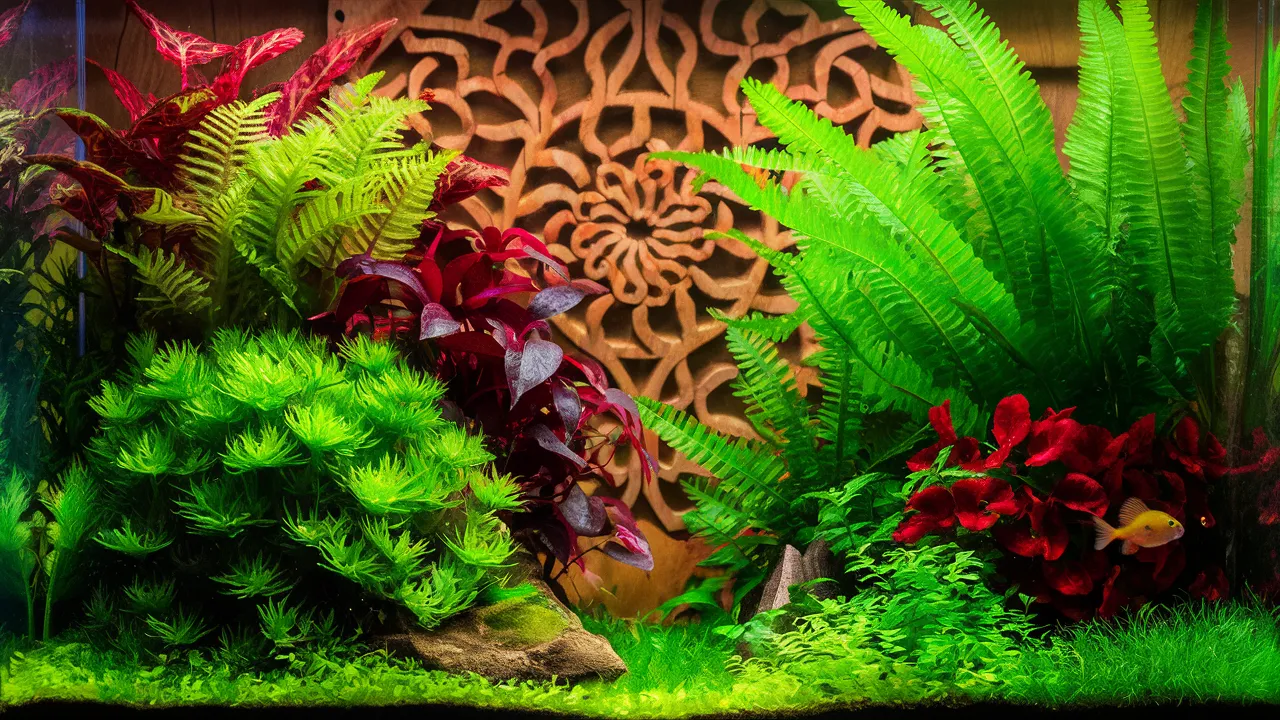Diy Aquarium Plants offer a rewarding and cost-effective way to achieve just that! In this guide, Betta Fish Guide dives deep into the world of creating stunning aquascapes using readily available materials and simple techniques.
Why Choose DIY Aquarium Plants?
Before we delve into the how-to, let’s explore the compelling reasons why DIY aquarium plants are gaining popularity:
- Cost-Effectiveness: Live plants can be expensive, especially for larger aquariums. DIY alternatives allow you to create lush landscapes without straining your budget.
- Creative Freedom: DIY opens up a world of possibilities, allowing you to design unique plants and tailor them to your aquarium’s specific theme and inhabitants.
- Sense of Accomplishment: There’s a unique satisfaction in handcrafting elements of your aquascape. It adds a personal touch and deepens your connection with your underwater world.
- Safe and Non-Toxic: When using appropriate materials, DIY plants provide a safe haven for your fish and invertebrates, free from harmful chemicals or pesticides often found on commercially treated plants.
Essential Materials for Crafting DIY Aquarium Plants
The beauty of DIY lies in its adaptability. You can use a wide range of materials found around your home or at craft stores. Here are some staples to get you started:
Base Materials
- Plastic Plants: Repurpose old, artificial plants by giving them a makeover or using their components as a base for your creations.
- Silk Plants: Similar to plastic plants, silk plants offer a flexible and durable base to build upon.
- Rocks and Driftwood: These natural elements provide a sturdy foundation for attaching your DIY plant creations.
Shaping and Coloring Materials
- Silicone Aquarium Sealant: This waterproof adhesive is crucial for attaching materials and creating realistic plant structures. Choose a non-toxic, aquarium-safe variety.
- Acrylic Paint: Use aquarium-safe acrylic paint to add vibrant colors and details to your plants.
- Epoxy Putty: This moldable putty is excellent for sculpting intricate details and textures.
- Fishing Line or Thread: Use these to bind materials together or create delicate plant features.
Additional Tools
- Scissors
- Paintbrushes
- Aquarium-safe glue (cyanoacrylate-based)
- Tweezers
- Ruler or measuring tape

DIY Aquarium Plant Ideas: From Beginner to Advanced
Ready to unleash your creativity? Here are some inspiring DIY plant projects to get you started:
Easy DIY Anubias: Perfect for Beginners
Anubias are beloved for their hardiness and striking appearance. Recreate their beauty with this simple method:
Materials: Plastic or silk leaves (various sizes), small rocks, aquarium-safe glue.
Process:
Select leaves that resemble Anubias foliage.
Apply a small amount of glue to the base of each leaf.
Attach the leaves to the rock, arranging them to mimic natural Anubias growth.
Allow the glue to dry completely before placing it in your aquarium.
DIY Java Fern Tree: Adding Height and Dimension
Java ferns are another popular choice for their low-maintenance nature. Create a stunning focal point with a DIY Java fern tree:
- Materials: Driftwood, Java fern plantlets (optional), fishing line, scissors.
- Process:
- Select a piece of driftwood with an appealing shape and multiple branches.
- If using live Java fern plantlets, carefully attach them to the driftwood using fishing line.
- Alternatively, create the illusion of Java fern leaves by cutting small, oval shapes from green plastic or silk material. Attach these to the driftwood using aquarium-safe glue.
- Position your Java fern tree in a prominent location in your aquarium.
DIY Moss-Covered Rocks: A Touch of Natural Beauty
Mosses add a touch of verdant realism to any aquascape. Here’s how to recreate this look:
- Materials: Rocks (various sizes and shapes), Java moss (live or dried), fishing line or cotton thread.
- Process:
- Choose rocks with crevices and textures for the moss to cling to.
- If using live Java moss, divide it into small portions.
- Wrap the moss around the rocks, securing it with fishing line or thread.
- Place the moss-covered rocks in your aquarium. The live moss will eventually attach itself to the rocks, creating a natural-looking effect.
Advanced DIY: Crafting Realistic Stem Plants
For a more challenging project, try creating lifelike stem plants:
- Materials: Thin, flexible plastic tubing (clear or green), aquarium-safe silicone sealant, acrylic paint (various shades of green), scissors.
- Process:
- Cut the plastic tubing into varying lengths to create stems.
- Apply small dots of silicone sealant along the stems to mimic leaf nodes.
- Using a toothpick or fine brush, create leaf shapes with the silicone sealant, starting at the nodes.
- Allow the silicone to partially dry, then use acrylic paint to add realistic color variations to the leaves and stems.
- Once completely dry, carefully plant the stems in your aquarium substrate.

Tips for Success
- Research and Inspiration: Before you begin, gather inspiration from pictures of real aquatic plants. Pay attention to their shapes, colors, and growth patterns.
- Aquarium-Safe Materials: Always prioritize non-toxic, aquarium-safe materials to ensure the health and well-being of your aquatic life.
- Patience is Key: Crafting realistic DIY plants takes time and practice. Don’t be discouraged if your first attempts aren’t perfect. Embrace the learning process and enjoy the creative journey.
- Experiment and Have Fun: Don’t be afraid to experiment with different materials, techniques, and designs. The possibilities are endless!
Maintaining Your DIY Aquarium Plants
Unlike their live counterparts, DIY aquarium plants require minimal maintenance. However, it’s essential to:
- Rinse Regularly: Gently rinse your DIY plants during water changes to remove any accumulated debris or algae.
- Inspect for Damage: Periodically check for any signs of wear and tear, repairing or replacing damaged parts as needed.
- Avoid Harsh Chemicals: Refrain from using harsh cleaning agents or chemicals near your DIY plants, as these can degrade the materials.
Conclusion
Creating DIY aquarium plants is a rewarding endeavor that allows you to personalize your aquascape while staying within budget. By embracing your creativity and following these guidelines, you can transform your aquarium into a stunning underwater oasis that reflects your unique style and passion for the aquatic world.

Related Posts
Activated Charcoal In Fish Tanks: Benefits And Uses
Do It Yourself Aquarium Decorations: Easy And Creative Ideas